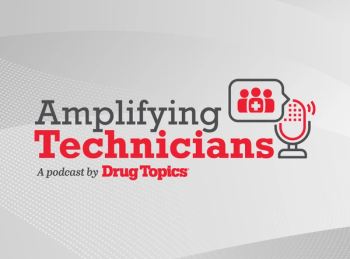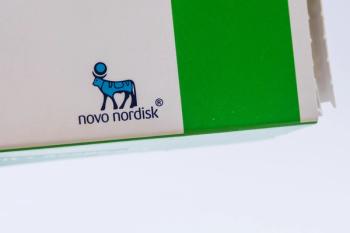
- Total Pharmacy® October 2025
- Volume 03
- Issue 05
GLP-1 Litigation and the Road Ahead for Independent Pharmacies
As shortages end, pharmacies that compound GLP-1s face lawsuits, stricter board oversight, and tougher FDA enforcement.
Independent pharmacies have been on the front lines of the glucagon-like peptide-1 (GLP-1) receptor agonist story from the beginning. When semaglutide and tirzepatide first exploded in demand, patients who needed the products but could not obtain branded versions turned to compounding pharmacies for their medication needs. In many ways, these pharmacies stepped up where manufacturers and distributors had fallen short, ensuring patients had continued access to essential medications during a shortage crisis. However, as the shortage has ended, the legal and regulatory climate has shifted dramatically. Today, pharmacies that continue to compound GLP-1s face lawsuits from major manufacturers, increased scrutiny from state boards of pharmacy, and clear enforcement signals from the FDA.
This article provides an overview of where things stand. It focuses on 3 themes: the wave of litigation initiated by manufacturers, the escalation of enforcement at the state board level, and the emerging posture of the FDA. Independent pharmacies, which often feel squeezed between patient need and regulatory demand, must pay close attention to these developments. The risks of ignoring them are no longer theoretical—they are immediate and substantial.
READ MORE:
The Litigation Landscape: Manufacturers Escalate
The most significant trend of the past year has been the aggressive litigation strategy deployed by drug manufacturers. Novo Nordisk and Eli Lilly, the 2 companies with branded GLP-1 products approved for diabetes and obesity management, have expanded their legal campaigns to protect market share and brand integrity.
Novo Nordisk, in particular, has not slowed its efforts to police the marketplace. On August 4, 2025, the company filed lawsuits against 14 defendants, many of which were pharmacies engaged in compounding or distribution of semaglutide products. The complaints focused on allegations that these entities were producing or distributing non–FDA-approved copies of semaglutide, often sourced from questionable supply chains or through foreign active pharmaceutical ingredients. Novo Nordisk has also targeted telehealth platforms and medical spas, which the company accused of skirting federal and state law in their distribution of compounded GLP-1s. The pace and scope of Novo Nordisk’s filings demonstrate that this is not a one-off initiative but a concerted campaign designed to deter any entity from engaging in compounding that the manufacturer views as unlawful.
Eli Lilly has taken a similar path. In April 2025, Lilly filed lawsuits in federal court in northern California against several telehealth companies, including well-known digital health platforms such as Fella Health and Mochi Health. These suits accuse the companies of distributing unapproved versions of tirzepatide, Eli Lilly’s branded GLP-1, without complying with FDA requirements. The litigation against telehealth providers follows earlier actions against compounding pharmacies, illustrating that Eli Lilly, like Novo Nordisk, is willing to pursue traditional pharmacies and emerging digital platforms.
What is most important for independent pharmacies is not simply that these lawsuits exist, but that courts have increasingly sided with the manufacturers. Preliminary rulings and injunctions have reinforced the authority of manufacturers and regulators to protect against what they characterize as unlawful copies. As a result, pharmacies can no longer assume that litigation is background noise or limited to fringe players. The legal system has begun to align with manufacturer and FDA positions, creating real exposure for compounding pharmacies that continue GLP-1 activity without meticulous compliance.
State Boards of Pharmacy: Enforcement on the Ground
While manufacturers have driven litigation in federal courts, state boards of pharmacy have been equally active in tightening oversight. The Ohio Board of Pharmacy, among others, has been a state board at the forefront of this trend. In June 2025, the Ohio Board of Pharmacy issued a formal notice that retatrutide, a newer investigational GLP-1 product, was not eligible for compounding under any circumstances. The board emphasized that pharmacies compounding the drug faced the risk of summary suspension. The announcement was significant not only because it targeted a specific product, but also because it reflected the board’s willingness to take swift action without waiting for lengthy investigations. It also reflected a clear, bright-line position, which can be rare in this type of complex legal and regulatory landscape.
One month later, in July 2025, the Ohio Board of Pharmacy published a detailed set of frequently asked questions (FAQs) on GLP-1 compounding. The FAQs clarified that compounding semaglutide or tirzepatide could no longer be justified based on shortage exemptions, because the FDA had resolved those shortages. The board stressed that only individualized, medically necessary variations documented in the patient record could justify compounding a GLP-1. In other words, cost, convenience, or patient preference would not be sufficient. This language has set the tone for other states considering how to address compounding in the post-shortage environment.
California has followed a similar path, although its enforcement has been more inspection-driven. Over the summer of 2025, California inspectors began flagging compounded GLP-1 products during routine surveys of pharmacies. Even minor modifications, such as adjusting dosage strength or adding vitamins like B12 or L-carnitine, were cited as “essentially a copy” of the commercially available product unless accompanied by clear documentation of medical necessity. Pharmacies licensed in California have already had to revise policies, retrain staff, and strengthen documentation practices to avoid discipline.
The broader lesson is that state boards of pharmacy are no longer passive observers and, in many ways, have become some of the most aggressive bodies in the country. They are enforcing aggressively and consistently, and they are working closely with the FDA. Independent pharmacies, which are more likely than large chains to engage in individualized compounding, must recognize that compliance expectations have shifted. What might have been tolerated only a few years ago may quickly become the basis for significant disciplinary action, suspension, or even referral for federal investigation by the FDA or other administrative agencies.
FDA Enforcement and Policy: A Turning Point
The FDA’s role in this story has been clear and decisive. The resolution of the GLP-1 shortages in late 2024 and early 2025 fundamentally changed the legal landscape. In December 2024, the FDA declared the tirzepatide shortage resolved. Two months later, in February 2025, the semaglutide shortage was also declared resolved. Those declarations started the clock on mandatory deadlines for compounding.
For 503A compounding pharmacies, the deadline to cease routine compounding of semaglutide and tirzepatide was April 22, 2025. For 503B outsourcing facilities, the deadline was May 22, 2025. Once those dates passed, compounding of GLP-1s was no longer permitted except in rare, individualized cases of medical necessity. Notably, affordability or patient preference were explicitly excluded as valid justifications.
Since those deadlines, the FDA has taken a firm enforcement posture. Warning letters, import alerts, and referrals to state boards of pharmacy have increased. The agency has been clear that compounded GLP-1 products are “essentially copies” of approved drugs and that such compounding is prohibited. Courts have backed this interpretation, rejecting challenges from industry groups that sought to extend compounding flexibility beyond the shortage period.
Moreover, state attorneys general have begun urging the FDA to expand its enforcement efforts. In February 2025, a coalition of attorneys general called on the agency to take more aggressive action against counterfeit and illegally sold GLP-1 products, particularly those marketed online. The alignment of state officials, federal regulators, and manufacturers means pharmacies should not expect leniency. The period of regulatory ambiguity is over.
The New Reality for Independent Pharmacies
Independent pharmacies are uniquely vulnerable in this new environment. Many engaged in compounding during the shortage period to meet patient demand and maintain revenue. However, with shortages resolved and litigation mounting, continuing those practices carries far greater risk than reward.
The practical steps for pharmacies are straightforward, although not necessarily easy. First, pharmacies must audit their own compounding practices immediately. Any GLP-1 compounding that lacks individualized medical justification should cease. Second, documentation must be strengthened. Prescriber notes should clearly explain why a patient cannot use the commercially available product, whether due to allergy, excipient sensitivity, or another legitimate medical reason. Generic statements about cost or preference are not enough.
Third, pharmacies should revisit staff training and policies. Pharmacists and technicians must understand the new legal framework and know what questions to ask prescribers. Recordkeeping practices should be reviewed to ensure they will withstand inspection. Fourth, pharmacies should monitor state-by-state developments closely. The regulatory climate is not uniform, and enforcement priorities vary, but the overall trajectory is clear: state boards of pharmacy are scrutinizing GLP-1 compounding with unprecedented intensity. Finally, pharmacies should consider engaging legal counsel proactively. Waiting until after a citation or lawsuit is not the ideal moment to begin developing a compliance strategy.
Conclusion
The GLP-1 era has moved from innovation to enforcement. Independent pharmacies that once played a critical role in meeting patient demand during shortages now find themselves at the center of a tightening legal vise. Manufacturers are suing, state boards are disciplining, and the FDA has ended its tolerance for shortage-driven compounding, especially where it constitutes “essentially a copy.”
This is not a time for shortcuts. Independent pharmacies must approach GLP-1 compounding as a high-risk activity justified only in rare, documented cases. Compliance is not optional; it is required. Pharmacies that adapt, document, and operate by the book can still thrive, but those who hope to continue business as usual will face lawsuits, suspensions, or worse.
In a field where patient care and professional integrity intersect, the message is simple: Do the work the right way, respect the rules, and recognize that in the world of GLP-1s, the ground has shifted beneath your feet, but there is still a viable playbook for success.
Want more like this? Check out the
Don’t get left behind: Sign up today for our
Articles in this issue
about 1 month ago
5 Questions With a Pharmacist: Amina Abubakar From Avant Pharmacyabout 2 months ago
Battling Burnout in Pharmacy: Strategies for Survival and ResilienceNewsletter
Pharmacy practice is always changing. Stay ahead of the curve with the Drug Topics newsletter and get the latest drug information, industry trends, and patient care tips.












































































































































